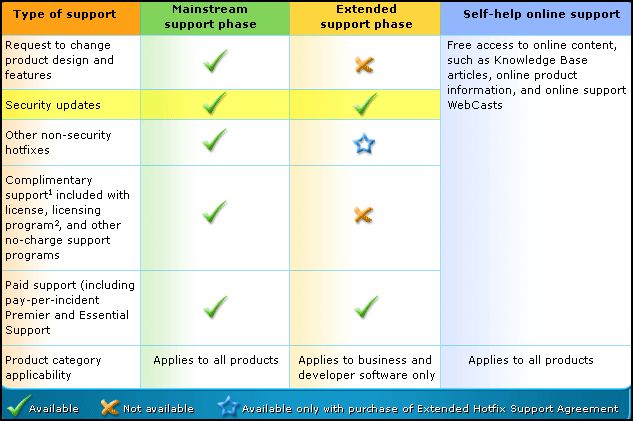Microsoft Product Support Lifecycle and SQL Server
Understand Microsoft Support Lifecycle is essential to minimize the risk of security exploits or loss of support.
Some resources you might find useful to understand it better are:
1 .https://support.microsoft.com/lifecycle/ (to understand the general rules on which the Lifecycle is based on)
If you want things to be easier, just go to
2.1 https://support.microsoft.com/gp/lifesupsps (to understand the lifecycle of supported Service Packs) or to:
2.2 https://support.microsoft.com/gp/lifeselect (it allows you to Select a product family to view support lifecycle information for products in that family)
Things to remember:
- Product Support Lifecycle lasts generally 10 years (5 years of Mainstream + 5 Years of Extended). For products that are annually released, Mainstream Support lasts 3 years.
- The differences between the 2 phases are highlighted in the following table:
- Both the Mainstream Support and Extended Support phases require the product’s supported service pack be installed to continue to receive support (including security updates).
- Service Pack support ends either 12 months after the next service pack releases or at the end of the product's support lifecycle, whichever comes first.
SQL Server Support Lifecycle Highlights:
- SQL Server MSDE users using Windows Vista are encouraged to Upgrade to SLQ Express (View)
- SQL Server 2000 Service Pack 3a Mainstream Support will Expire on the 10th July, 2007
- SQL Server 2005 Service Pack 0 Mainstream Support will Expire on the 10th July, 2007
